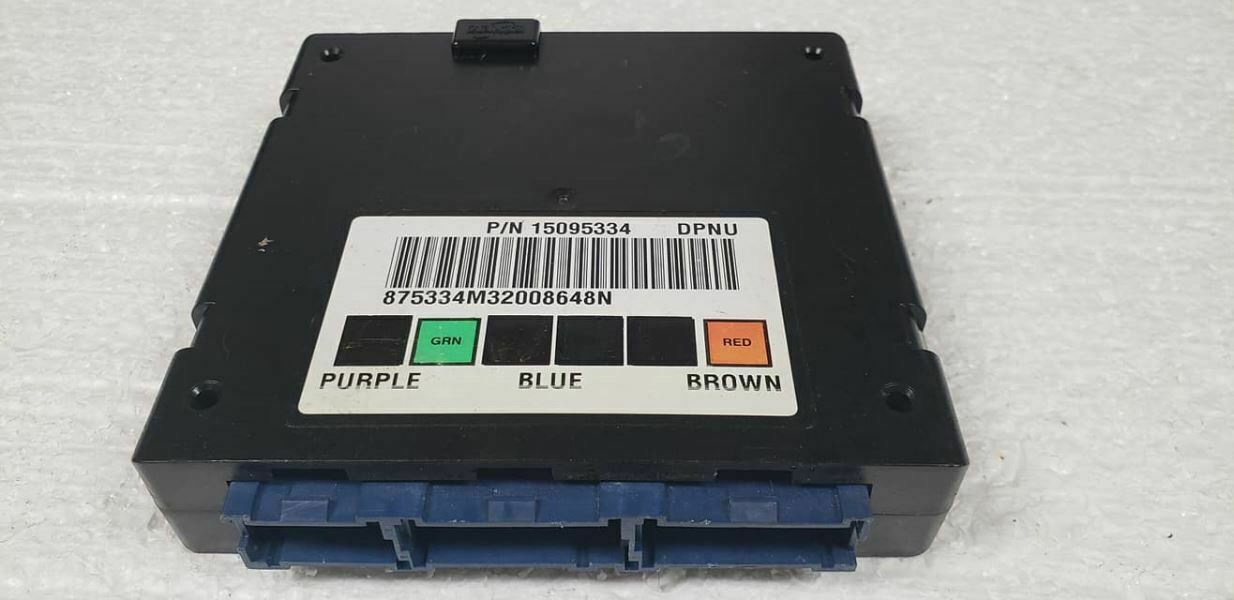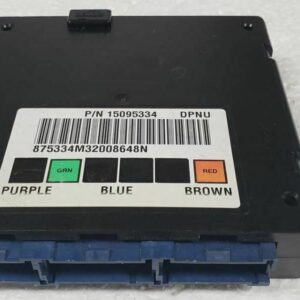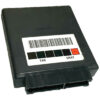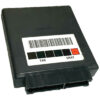Restore Your Vehicle’s Brain and Banish Electrical Gremlins
Are you tired of dealing with bizarre electrical issues in your GM truck, van, or SUV? Flickering interior lights, power windows with a mind of their own, a security light that won’t turn off, or a battery that’s mysteriously dead every morning are all classic signs of a failing Body Control Module (BCM). As the central hub for your vehicle’s body electronics, a faulty BCM can cause a cascade of frustrating and seemingly unrelated problems. I’ve seen it hundreds of times in my 20+ years on the shop floor. This isn’t just an annoyance; it’s a breakdown of your vehicle’s core comfort and security systems.
This is your direct-fit, reliable solution. We offer a genuine replacement GM BCM 15081796 that arrives at your door pre-programmed to your vehicle’s specific VIN. This crucial step ensures seamless integration and saves you a costly trip to the dealership for programming. We flash the module with the latest software updates from GM, so you’re not just replacing a part—you’re getting the most current logic for your vehicle’s systems. Stop chasing electrical ghosts and restore your GM’s functionality and reliability today.
Case Study: A Tricky Diagnosis
A customer brought in his 2002 Silverado 1500 with a perplexing issue: the radio would turn on by itself, the dome lights would flicker while driving, and the power locks worked intermittently. He had already replaced the battery and checked the alternator. After hooking up my diagnostic scanner, I saw multiple communication error codes pointing toward the BCM. These modules, especially on this GMT800 platform, are notorious for internal solder joint failures over time, leading to exactly these kinds of chaotic electrical symptoms. We installed a VIN-programmed BCM, and within an hour, every single issue was resolved. The truck’s electronics were stable and predictable again, saving the customer from endless diagnostic fees and parts-swapping.
Common Signs of a Failing BCM
- ✔ Erratic or non-functional power windows, door locks, or mirrors.
- ✔ Interior or exterior lights flickering, staying on, or not working at all.
- ✔ The security system acting up, preventing the vehicle from starting (Security light on).
- ✔ Horn sounding unexpectedly or not working when pressed.
- ✔ Intermittent operation of the radio or climate controls.
- ✔ Unexplained battery drain that leaves you stranded.
- ✔ False warning lights on the instrument cluster.
A Straightforward Guide to Installation
Replacing the BCM is a manageable job for a DIYer with basic tools. The location varies slightly by model, but it’s typically found under the driver’s side dash or in the center dash area.
- Safety First: Always disconnect the negative terminal from your vehicle’s battery before working on any electrical components.
- Locate the BCM: On most trucks and SUVs (Silverado, Sierra, Tahoe), it’s under the steering column. On vans (Astro, Safari) and S-series trucks, it’s often behind the center dash panel. Remove any necessary trim panels to gain access.
- Disconnect and Remove: Carefully unplug the electrical connectors from the old BCM. They have locking tabs that need to be depressed. Once disconnected, unbolt or unclip the module from its mounting bracket.
- Install the New Module: Mount your new, pre-programmed BCM in the same location and securely reconnect all the electrical harnesses. You should hear a ‘click’ as they lock into place.
- Post-Installation Procedures: Reconnect the battery. Crucially, you must now perform the necessary relearn procedures. This is not optional for proper function.
IMPORTANT: Post-Installation Steps Required
After installing your new GM BCM 15081796, you must perform the following to ensure full system functionality and safety:
- Airbag System Reset: The airbag warning light will likely be on. You must use a capable diagnostic tool to perform the ‘Setup SDM Primary Key in BCM’ procedure. This re-establishes communication between the airbag system and the new BCM.
- Brake Pedal Position Sensor Relearn: Some vehicles require a recalibration of the brake pedal position sensor. This is vital for the proper operation of brake lights and stability control systems.
- Consult Your Manual: While these are the most common procedures, specific steps can vary. Always refer to a vehicle-specific service manual or consult a professional if you are uncertain.
Will This Fit My Vehicle?
This module is a direct replacement for part numbers 15063578, 15081796, 15095334, 19208537, DKAK, and DPNU. It is guaranteed to fit the following models:
- Astro / Safari (GMC): 2002-2005
- Avalanche 1500: 2002 (4×2)
- Blazer S10 / Jimmy S15: 2002-2005
- S10 / S15 / Sonoma: 2002-2004
- Escalade: 2002 (4×2)
- Silverado / Sierra 1500, 2500, 3500 & Denali: 2002
- Suburban 1500 / 2500: 2002
- Tahoe / Yukon: 2002 (4×2)
- Yukon XL 1500 / 2500: 2002
Note: Please verify the part number on your original module to ensure a perfect match. Upon purchase, we will require your VIN to program the module correctly before shipping.
Frequently Asked Questions
Do I need to do anything after installing this BCM?
Yes. Because this part is new to your vehicle’s network, you must perform a ‘Setup SDM Primary Key in BCM’ procedure with a diagnostic tool to sync it with the airbag system and turn off the warning light. A brake pedal position sensor relearn may also be required.
What is the benefit of a VIN-programmed module?
VIN programming loads your vehicle’s specific configuration and the latest GM software onto the module before it ships. This makes the installation process much simpler, as it eliminates the need for expensive dealer-level programming tools.
Where is the BCM located on my 2002 Silverado?
On the 2002 Silverado and other full-size GM trucks and SUVs from that year, the Body Control Module is typically located under the driver’s side of the dashboard, near the steering column.
Will this fix my ‘Security’ light issue?
In many cases, yes. The BCM is a key component of the Passlock security system. A faulty BCM is a very common cause of a persistent ‘Security’ light and no-start conditions. This programmed module will restore that functionality.
How do I provide my VIN number?
After you complete your purchase, you will need to send us a message with your 17-digit Vehicle Identification Number (VIN). We cannot ship the module until we have programmed it with your VIN.



